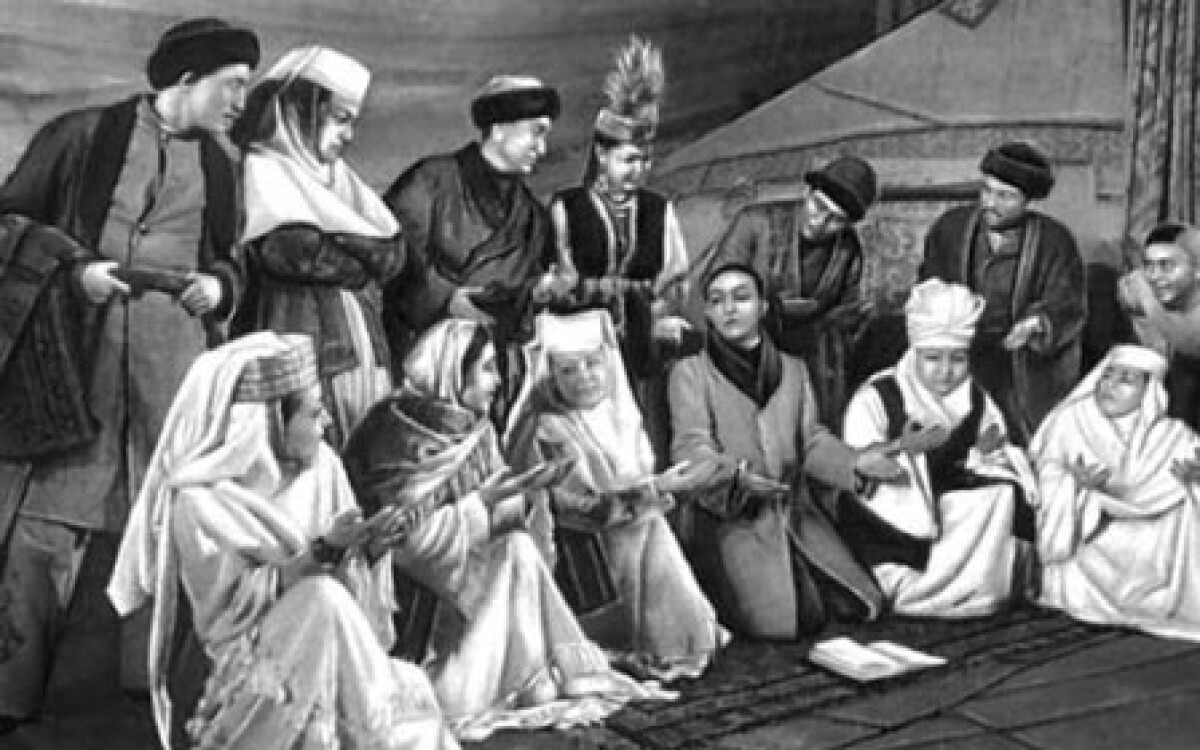
Since the birth the child had their parents’ relatives, after getting married the situation changed.
From the time of becoming married, a dzhigit had three terms of relation by the male and female side.
First one (oz zhurty) — relation of men and women from father’s side. In any kin the most respectable and honorable were grandfather and grandmother, who were positively influencing the surrounding people with their rich life experience, and were the masters of the house.
If a man was tending a herd of cattle, cultivating grain, hunting, then the mother was keeping household, therefore it was said that «A man is the head, and a woman is the neck», «Father is a tree, the child is his leaves».
There was a special attitude to the relations between brothers and sisters. «If brothers get on well with each other, then they have many horses. If sisters-in-law get on well, then there is much food at home».
The second term of relation is the mother’s side, that is, nagashy zhurty. As the blood relation was determined by the father’s side, zhien(y) (children) belonged to the outsider’s kin of the married daughters and sisters.
However, in accordance with the established norms, the Kazakhs tried never to offend their zhiens, and never to refuse them to anything if possible.
Mother’s relatives always indulged their zhiens, showing lenience to their frolics and various whims. Evidently, it can be explained by the fact that these relatives still have that gentle feeling to the girls (now mothers of these zhiens), who were once sold for the kalym and had no abandon their homes against their will forever. That is why they wished their children only well.
Zhiens could easily interact with their uncles from mother’s side. Their relationship almost always was touching.
The third term of relation is kayin zhurty (relatives from the wife’s father side).
Even the prophet valued his son-in-law. Not only the parents, but also close relatives of the wife had great respect to the son-in-law. And the son-in-law also respected them. He treated the older relatives as his own relatives, and took care of the younger relatives as well.
This mutual relation of the son-in-law and wife’s relatives depended on the duration of the joint life of the spouses. In case of the untimely death of the wife, especially if they had no children, all the relations between relatives faded away with time, but the intergeneric similar connections could last and were renewed quite often (suyek zhanartu) during the lives of several generations.
Use of materials for publication, commercial use, or distribution requires written or oral permission
from the Board of Editors or the author.
Hyperlink to Qazaqstan tarihy portal is necessary. All rights reserved by the Law RK “On author’s rights
and related rights”.
To request authorization email to
or call to 8 (7172) 57 14 08 (in
- 1164)
